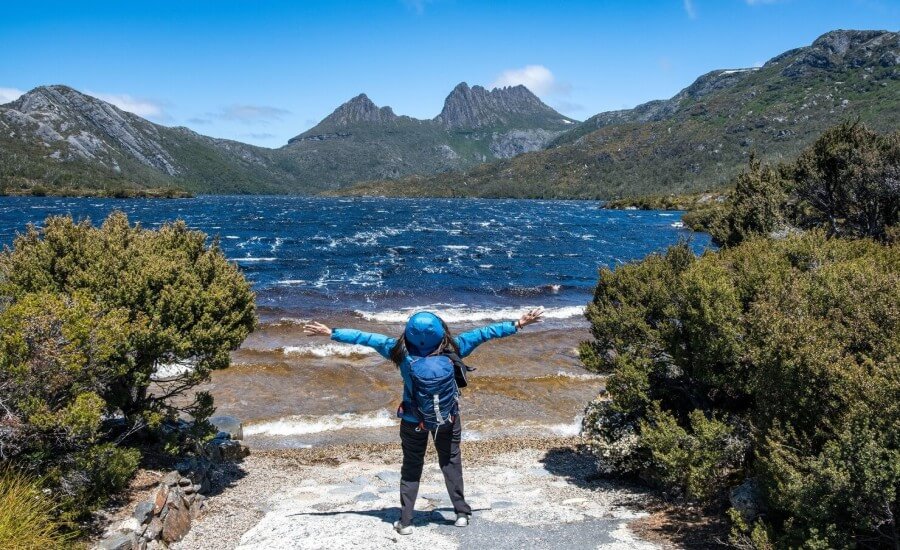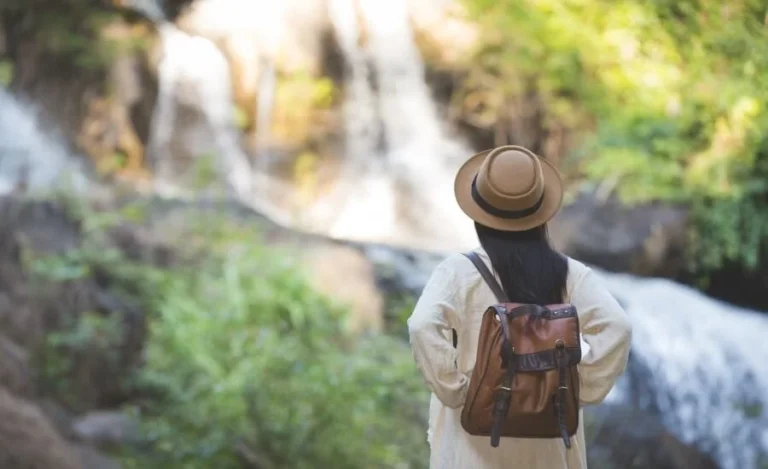
New Zealand, or Aotearoa, is a land of breathtaking natural beauty. From pristine golden beaches and lush, ancient rainforests to majestic snow-capped peaks, its landscapes captivate the soul. As global consciousness shifts towards environmental responsibility, a growing number of travelers are seeking more than just a beautiful view; they are seeking eco-friendly destinations. The desire for a carbon-neutral vacation one that minimizes environmental impact is reshaping the tourism industry.
This guide is for the conscientious traveller, the nature lover, and those seeking a digital detox in a place that values preservation as much as presentation. We will reveal ten incredible carbon-neutral vacation destinations in new zealand that are leading the charge in sustainable tourism. Discover where you can explore this stunning country responsibly, leaving behind nothing but footprints and taking with you memories that align with your values.
Understanding Carbon Neutrality in Travel
What “Carbon Neutral” Really Means
The term “carbon neutral” might sound complex, but its core concept is simple: achieving a net-zero carbon footprint. For travel, this involves a two-pronged approach:
- Reduction: Actively choosing options that produce fewer greenhouse gas emissions. This includes selecting fuel-efficient transport, staying in eco-friendly accommodations, and participating in low-impact activities.
- Offsetting: For the emissions that are unavoidable (like a long-haul flight), you can “offset” them by investing in projects that remove an equivalent amount of carbon dioxide from the atmosphere. These projects often include reforestation, renewable energy initiatives, or methane capture programs.
A truly carbon neutral travel experience is one where the environmental cost of your journey is balanced out, ensuring your adventure doesn’t come at the planet’s expense.
New Zealand’s Commitment to Sustainability
New Zealand has woven a deep commitment to environmental guardianship—known as kaitiakitanga into its national identity. The country has ambitious climate goals and a vision for a low-carbon future. The tourism sector plays a pivotal role in this, with the national Tiaki Promiseencouraging both locals and visitors to act as guardians of the land, sea, and culture for future generations.
Measuring Your Travel Footprint
Before you can reduce or offset your impact, you need to understand it. Several online carbon calculators can estimate the emissions from your flights, accommodation, and activities. Understanding your footprint is the powerful first step towards making more informed and sustainable travel choices.
Top 10 Carbon-Neutral Destinations
1. Stewart Island/Rakiura: A Wild, Untouched Paradise
Stewart Island is New Zealand’s third-largest island, and over 85% of it is protected as Rakiura National Park. For those looking for unadulterated, wild nature, it’s a sanctuary.
Eco-Lodges and Low-Impact Activities
- Stay in off-grid lodges and accommodations powered by solar panels and other renewable energy sources.
- Embark on guided walks with local experts who prioritize minimal disturbance to the fragile ecosystem.
- On Ulva Island, discover the wonder of seeing a kiwi bird in its untainted, natural habitat.
Protecting Native Biodiversity
One of the nation’s most significant biodiversity sanctuaries is Stewart Island. Conservation is not just a priority; it’s a way of life. The success of projects like the Rakiura Tītī Islands Restoration showcases a deep commitment to protecting native species.
2. Fiordland National Park: Majestic Fjords, Minimal Footprint
A region of striking fjords, majestic waterfalls, and placid lakes, Fiordland is home to the well-known Milford and Doubtful Sounds.
Sustainable Boat Tours
Operators in Fiordland are increasingly turning to sustainable solutions. Choose a tour on an electric or hybrid vessel to experience the silent majesty of Milford Sound or Doubtful Sound. These reduce both noise pollution for marine life and harmful air emissions, making for a truly immersive and responsible journey.
Guided Hikes and Conservation Zones
Trek the world-renowned Kepler or Milford Tracks with certified guides who educate visitors on the region’s delicate ecology. According to a Department of Conservation (DOC) ranger in Fiordland, “Our goal is to help visitors connect with this powerful landscape in a way that actively contributes to its preservation. Every guided tour fee includes a portion that goes directly back into track maintenance and conservation projects.”
3. Abel Tasman National Park: Golden Beaches, Green Adventures
Known for its turquoise waters and crescent-shaped golden beaches, Abel Tasman is a low-impact adventurer’s dream come true.
Kayaking and Walking Trails
The best way to explore this stunning coastline is through human power.
- Kayak: Glide silently through the water, exploring hidden coves and observing seals from a respectful distance. This is a true zero-emission activity.
- Walk: Hike sections of the Abel Tasman Coast Track, staying in eco-friendly huts managed by DOC.
Responsible Tour Operators
A significant percentage of tour operators in the Abel Tasman region hold a Qualmark Green Gold or Silver certification, the highest standard for sustainable tourism in New Zealand. These businesses are audited on their waste reduction, energy efficiency, community engagement, and conservation initiatives.
4. Rotorua: Geothermal Wonders, Green Operations
A center of geothermal activity and a thriving Māori culture, Rotorua ingeniously uses its natural resources to generate sustainable electricity.
Geothermal Energy Use
Many hotels, motels, and attractions, including the famous Polynesian Spa, are heated and powered by geothermal energy. This natural, largely carbon-free energy source drastically reduces the city’s reliance on fossil fuels.
Forest Adventures with a Conscience
Explore the magnificent Redwood Forest by walking or biking the extensive network of trails. For a unique perspective, visit the Redwoods Treewalk, an operation that not only provides a stunning canopy experience but also actively participates in forest conservation and educational programs.
5. Fox Glacier and Franz Josef Glacier on the West Coast
Walking on a glacier is a humbling experience, and operators here are increasingly aware of the need to protect these retreating rivers of ice.
Heli-Hikes with Emission Offsets
Helicopter access is frequently required due to the glaciers’ retreat. To mitigate this impact, leading helicopter companies offer carbon-offset flights. When booking, you can contribute a small fee that goes directly to certified carbon-reduction projects, balancing the emissions from your flight.
Glacier Protection Initiatives
Local guides are powerful advocates for climate action. During your tour, you will learn about the glaciology and the pressing challenges these natural wonders face. Actionable Takeaway: Always ask your tour provider about their carbon offsetting programs and environmental policies.
6. Coromandel Peninsula: Coastal Charm, Eco-Friendly Stays
The Coromandel is beloved for its laid-back vibe, stunning beaches like Cathedral Cove, and quirky attractions like Hot Water Beach.
Sustainable Accommodation Options
The peninsula is dotted with eco-resorts, off-grid tiny homes, and farm stays that prioritize sustainability. These accommodations often feature rainwater harvesting, extensive recycling programs, and on-site gardens that supply their kitchens.
Protecting Marine Environments
- Choose operators for activities like kayaking or snorkeling who are members of local conservation trusts.
- Always bring more than you need, especially when visiting isolated beaches.
- Bring a reusable water bottle and coffee cup to minimize single-use plastic.
- Respect the rāhui (temporary prohibitions) placed on areas to allow marine life to recover.
7. Queenstown: Adventure, with an Eco-Conscious Twist
Queenstown may be the adventure capital of the world, but it’s also fostering a strong culture of sustainability.
Offsetting Adventure Activities
Many of Queenstown’s well-known adventure companies have started offering carbon-neutral holiday choices, such as jet boating and bungy jumping. They either offset their operational emissions directly or offer customers the chance to do so. An operator from a leading adventure company noted, “Our playground is the natural environment. Protecting it is not only morally right; it is also smart business. Our sustainability journey is about ensuring these adventures are here for generations to come.”
Exploring the Surrounding Nature
Balance high-octane thrills with low-carbon activities. Hike to the top of Queenstown Hill for panoramic views, cycle the scenic Queenstown Trail, or explore the serene shores of Lake Wakatipu on foot.
8. Bay of Islands: Marine Life and Mindful Tourism
This subtropical paradise is home to 144 islands and a rich marine ecosystem.
Dolphin Watching and Sailing
Opt for boat tours with a Qualmark Enviro Award or those that are certified by DOC as “responsible whale and dolphin watching operators.” These tours adhere to strict guidelines to minimize disturbance to marine mammals. Sailing is another fantastic, low-carbon way to explore the bay.
Historic Sites and Nature Reserves
Visit the Waitangi Treaty Grounds, a site of immense cultural importance, and explore the predator-free island sanctuaries of Urupukapuka and Motuarohia. A network of marine reserves protects the underwater habitats, making for pristine snorkeling and diving experiences.
9. Chatham Islands: Remote Beauty, Unique Culture
For a truly off-the-beaten-path, tech-free vacation, the remote Chatham Islands offer unparalleled seclusion and a unique ecosystem.
Preserving Island Ecosystems
The Chathams are home to unique flora and fauna found nowhere else on earth. The naturally low visitor numbers help preserve this fragile environment. Your visit can actively support conservation by choosing locally owned tours that contribute to projects like the Chatham Island Taiko Trust, dedicated to saving one of the world’s rarest seabirds.
Experiencing Remote Wilderness
This is a destination for birdwatching, rugged coastal walks, and learning about the unique Moriori culture. By staying in locally owned accommodations and hiring local guides, your tourism dollar directly supports the small island community dedicated to preserving its heritage and environment.
10. Wellington: Capital City, Green Initiatives
New Zealand’s capital is a compact, vibrant city that proves urban environments can be leaders in sustainability.
Urban Sustainability Efforts
Wellington boasts a fantastic public transport system and a strong cycling culture, making it easy to explore without a car. The city’s culinary scene is a leader in the farm-to-table movement, with countless cafes and restaurants championing local, seasonal, and sustainable produce.
Exploring Zealandia Ecosanctuary
Zealandia is a world-first, fully-fenced urban ecosanctuary. Its 500-year vision is to restore a 225-hectare valley to its pre-human state. A visit here is a direct contribution to groundbreaking conservation and a powerful example of how nature can be brought back into the heart of a city. Actionable Takeaway: Ditch the rental car and explore Wellington using its electric buses and your own two feet.
Planning Your Carbon-Neutral New Zealand Adventure
Choosing Eco-Certified Providers
When booking tours, activities, or accommodation, actively look for providers with certifications like Qualmark’s Sustainable Tourism Business Award. This is the clearest indicator that a business has been independently assessed and is genuinely committed to sustainable practices.
Packing Essentials for Sustainable Travel
- A reusable water bottle to refill and avoid plastic waste.
- A reusable coffee cup for your daily flat white.
- A durable, reusable shopping bag for souvenirs and groceries.
- Solid, package-free toiletries (shampoo bars, etc.) to reduce plastic.
- Reef-safe sunscreen to protect marine ecosystems.
Supporting Local Communities
One of the best ways to travel sustainably is to ensure your money supports the local economy. Eat at restaurants that source local produce, buy authentic crafts directly from artisans, and stay in locally owned B&Bs or motels. This enriches your experience and contributes directly to the communities you visit.
Conclusion: Travel with Purpose
New Zealand’s stunning landscapes are both a gift and a responsibility. By choosing eco-friendly destinations and adopting mindful travel habits, you can experience all the magic Aotearoa has to offer while helping to protect it. The ten destinations highlighted here prove that adventure and sustainability can go hand-in-hand. Make your next trip a carbon-neutral vacation and become part of the movement to preserve these special places for generations to come.
Ready to plan your own green getaway? Explore our other guides on sustainable travel in New Zealand and start your journey today!
Frequently Asked Questions (FAQs)
What is the most eco-friendly way to travel in New Zealand?
The most eco-friendly way to travel within New Zealand involves a combination of long-distance electric buses, trains (like the Northern Explorer or TranzAlpine), and, for shorter distances, cycling or walking. When a car is necessary, consider renting an electric vehicle (EV), as New Zealand’s charging network is rapidly expanding.
How can I offset my carbon footprint for a trip to New Zealand?
You can offset your carbon footprint through reputable organizations that invest in certified carbon reduction projects. Many airlines, including Air New Zealand, offer an offsetting option when you book your flight. Additionally, you can use independent platforms like Toitū Envirocare or Ekos to calculate your travel emissions and purchase carbon credits that support native forest regeneration in New Zealand.
What does it mean for a holiday to be carbon neutral?
A carbon neutral holiday is a trip where the total greenhouse gas emissions generated by your travel, accommodation, and activities are calculated and then balanced out (or “neutralized”) by investing in projects that remove an equivalent amount of carbon from the atmosphere. This is achieved through a combination of reducing your impact wherever possible and offsetting the remainder.
Are there eco-certifications to look for in New Zealand tourism?
Yes. The most prominent certification is Qualmark, New Zealand tourism’s official quality assurance organization. Look for businesses with a Sustainable Tourism Business Award (Bronze, Silver, or Gold tier), which demonstrates their commitment to environmental performance and community engagement.
What is the Tiaki Promise in New Zealand?
The Tiaki Promise is a national initiative and a commitment to care for New Zealand. It’s a set of guiding principles for visitors to follow, encouraging them to travel safely, protect nature, keep the country clean, and respect the local culture. By upholding the Tiaki Promise, you become a guardian (kaitiaki) of Aotearoa.





